Rosemary Garlic Sourdough Bread
5.0
(4)
Your folders
Your folders
Prep Time: 60 minutes
Cook Time: 45 minutes
Total: 1605 minutes
Servings: 16

Ingredients
Export 9 ingredients for grocery delivery
Instructions
Step 1
Mix Levain: Mix together ripe/active sourdough starter with bread flour and water. Cover loosely and let sit 3-4 hours at 78°F until doubled, bubbly & peaked.Note: If you have a ripe, bubbly, active sourdough starter that is fed equal parts flour and water - it can be substituted for the levain in this recipe.
Step 2
Right after you mix the levain, prepare the roasted garlic. Preheat the oven to 400ºF. Prepare 3 garlic bulbs by peeling any excess outer skin. Slice the tops of the garlic bulbs about 1/2 inch from the top of the cloves, cutting away the skin until the garlic cloves are exposed. Place garlic cloves in the middle of a large sheet of aluminum foil. Drizzle with olive oil and a little salt. Wrap garlic cloves in the foil completely. Place in a baking dish and bake for 30-40 minutes until cloves are very soft and caramelized.
Step 3
Remove roasted garlic from the oven and let cool completely. Squeeze garlic cloves from the bottom of the bulb, pushing the cloves out of the bulb and into a container. Mash with a fork and set aside. This step can also be done a day or two before making this recipe - refrigerate the garlic until ready to use.
Step 4
Fermentolyse: Once the levain is ready (bubbly, doubled in size, milky sweet smell), mix together 100 grams levain, 350 grams water (warm the water if the ingredients are too cold and cool water if the ingredients are too warm), 450 grams bread flour and 50 grams whole wheat flour. Let rest for 30 minutes.
Step 5
Mix the Dough: After 30 minutes, add the reserved 10 grams salt and 25 grams of water. Combine using your hands by squeezing the dough between your fingers, pinching chunks of dough and reincorporating together. The dough will break apart and then reform in the bowl through this process. Pick up one side of the dough and fold it over on itself. The dough will be sticky. Wet your hands as needed and continue to work with the dough until all the salt and water has been incorporated. Transfer the dough to a plastic container or a glass bowl and cover.
Step 6
Stretch and Folds: Perform a series of “stretch and folds” throughout the next 2 hours. The goal is to strengthen the dough. To “stretch and fold,” wet your hand (so it doesn’t stick to the dough). Reach around the dough down to the bottom of the bowl, pull the dough up and over and place it on top of the dough. Turn the bowl a quarter turn and repeat the stretch and fold. Turn another quarter turn and repeat. Perform one more quarter turn, stretching and folding the dough. Cover and set aside. Take note of how the dough feels through this process. It will go from feeling a little shaggy to smooth and elastic. Cover the bowl and wait about 30 minutes in between stretch and folds.
Step 7
Stretch and fold #1: 30 minutes into bulk fermentationPluck the rosemary stems off the sprigs. Carefully run your knife through them to chop into small pieces. Set aside. Stretch and fold #2: 30 minutes later - during this stretch and fold, add the roasted garlic on top of the dough. Sprinkle with chopped rosemary. Perform stretch and fold #2, incorporating the garlic and rosemary in as you fold.Stretch and fold #3: 30 minutes later, the dough will spread out. Stretch and fold again, incorporating the roasted garlic and rosemary into the dough.Stretch and fold #4: Optional, if you feel your dough needs it, stretch and fold again, incorporating the roasted garlic and rosemary throughout the dough.
Step 8
Rest: Cover the dough and let rise for 1.5-2 more hours. You’ll know the dough is ready to shape when the dough is puffed up, jiggles when you shake the bowl, has scattered bubbles visible on the sides and top. The dough will not double in size, but will rise about 30-40%. If it is not showing these signs, let the dough continue rising and check back in 30 minutes.
Step 9
Pre-shape: Tip the bowl upside down, allowing the dough to fall onto a clean counter surface. Be gentle to avoid degassing the dough as much as possible. Wet your hands and the bench knife if needed and push the bench knife under the dough on one side and your free hand on the other side to tuck the dough under itself. The goal is to introduce some tension into the dough. Repeat this process, going around in a circle until you have a ball of dough. If any pieces of garlic pop out during this time, take the garlic and stick it on the underside of the dough.
Step 10
Bench Rest: Let the dough rest uncovered for about 30 minutes at room temperature. The dough will flatten (like a pancake) during this period of time. This allows the gluten in the dough to relax and prepares the dough to be shaped.
Step 11
Shaping: Prepare a bowl or banneton. Place a kitchen towel or hair net in the bowl and liberally flour as needed. Sprinkle a little flour on top of the dough. Using a bench knife, lift the dough up off the counter and place it on top of the countertop – floured side down. This ensures that the flour is staying mainly on the outside of the dough. Going around in a circle, pull the dough sideways towards you and then fold up to the top of the round. Move 90 degrees and repeat the same process pulling the dough sideways and then folding up to the top. As you continue this process around the dough, increase the tension as you pull. Gather the bread into a circle and place into a lined bowl. Remove any roasted garlic that has popped out on the surface of the dough to prevent burning in the oven.Note: It is possible to shape the dough without any extra flour. The dough can stick to the kitchen towel but doesn't stick to the hair nets if cold proofed.
Step 12
Cold Fermentation: Cover the dough with the tea towel/shower cap/plastic wrap and refrigerate overnight or up to 12-20 hours. If you want to bake the same day, you can let the dough rise for about 3-4 hours until puffed up and risen. Then bake according to recipe directions.
Step 13
Preheat: Put a Dutch oven (top and all) into the oven and preheat to 500°F for 30 minutes. You are working with very high temperatures, so make sure you have some good hot pads. Once preheated for 30 minutes, pull the loaf out of the refrigerator. Remove the covering. Place a piece of parchment paper on top of the dough. Flip the dough over so it is now sitting on the parchment paper. Take off the bowl/banneton and the kitchen towel.
Step 14
Scoring: Use a very sharp knife or bread lame to score the dough. Take the bread lame and score on one side of the dough, at a shallow angle, about 1 inch deep. Remove any inclusions that pop out. Score straight from the refrigerator for best results.
Step 15
Baking: Carefully remove the Dutch oven from the 500°F oven. Take the lid off and place your bread into the Dutch oven (including parchment paper – this helps with the transfer). Put the lid on and put back in the oven. Lower the temperature to 450°F and bake for 25 minutes. After 25 minutes, take the lid off the Dutch oven and continue baking for 20 minutes until the bread is a crackly deep brown. Remove the Dutch oven and let bread cool. Enjoy!
Top similar recipes
Curated for youYour folders
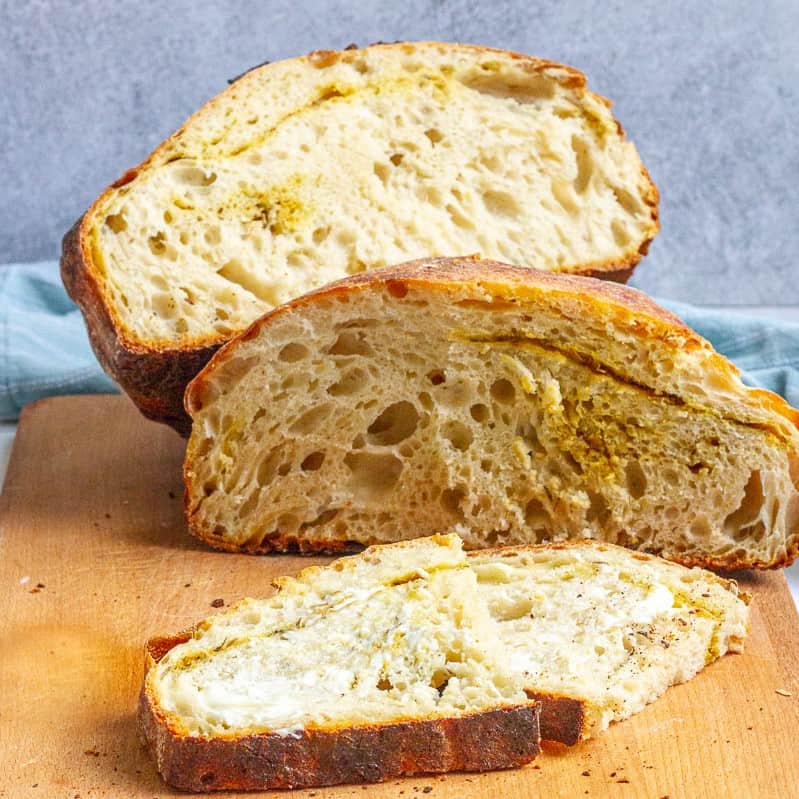
 361 views
361 viewsRosemary Garlic Sourdough Bread
champagne-tastes.com
5.0
(5)
60 minutes
Your folders
 56 views
56 viewsRosemary Garlic Sourdough Bread
amybakesbread.com
Your folders
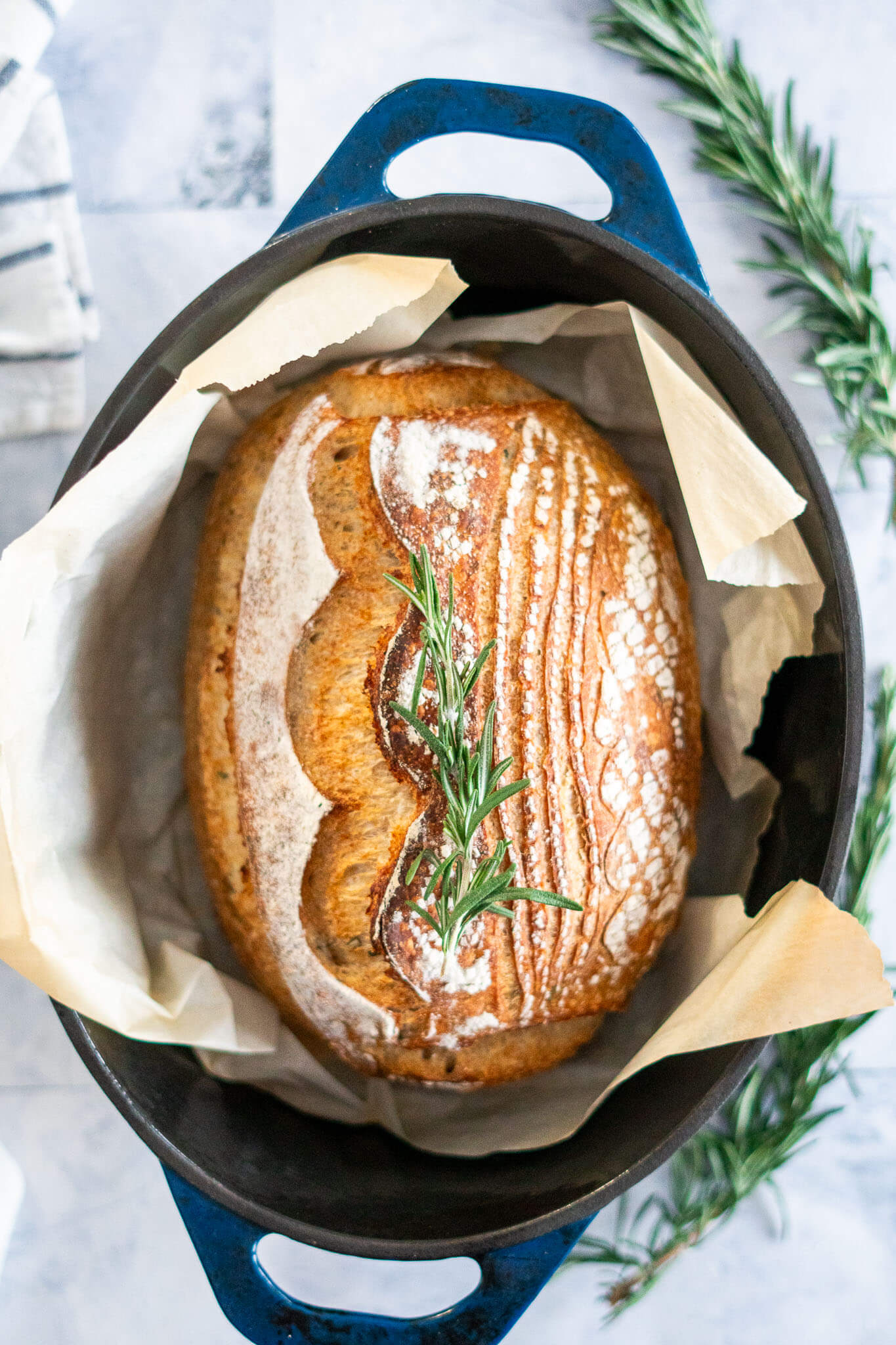
 208 views
208 viewsRosemary Sourdough Bread
cravethegood.com
5.0
(1)
45 minutes
Your folders
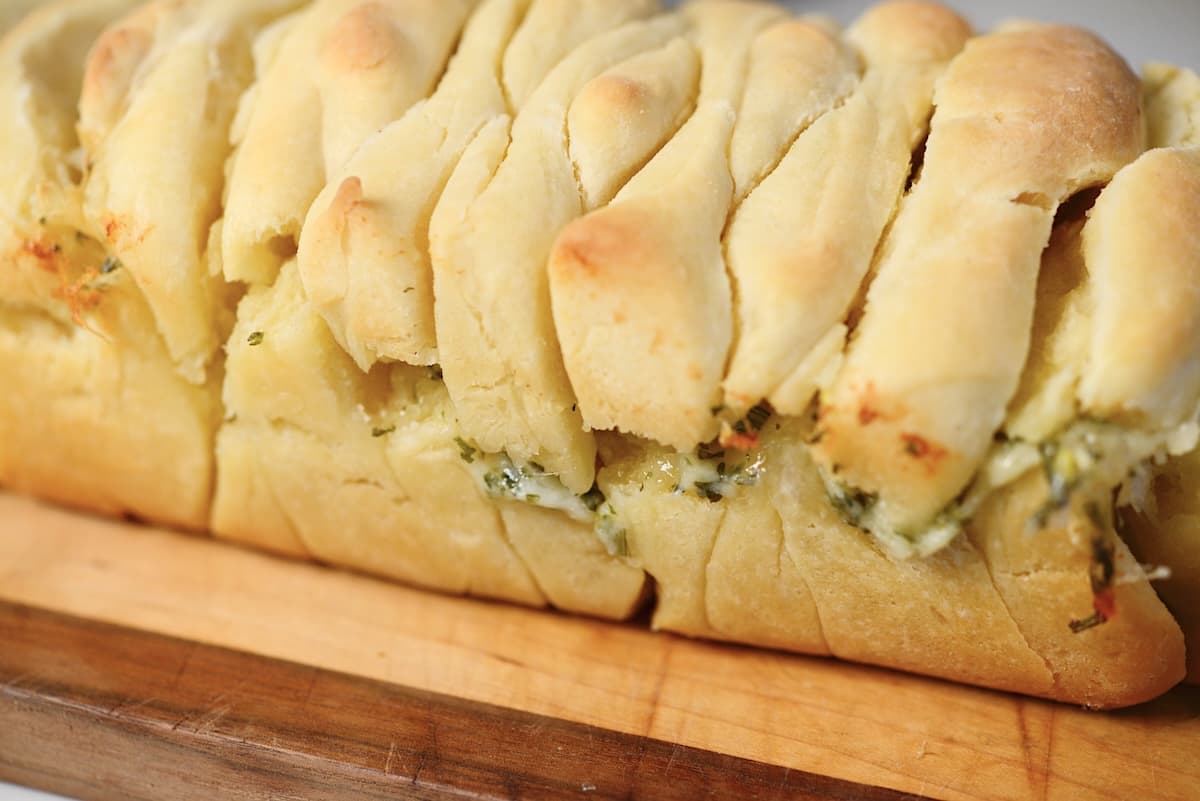
 7 views
7 viewsSourdough Garlic Rosemary Pull-Apar...
ourgabledhome.com
40 minutes
Your folders
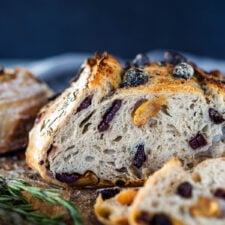
 810 views
810 viewsRosemary Olive Sourdough Bread
feastingathome.com
5.0
(14)
40 minutes
Your folders
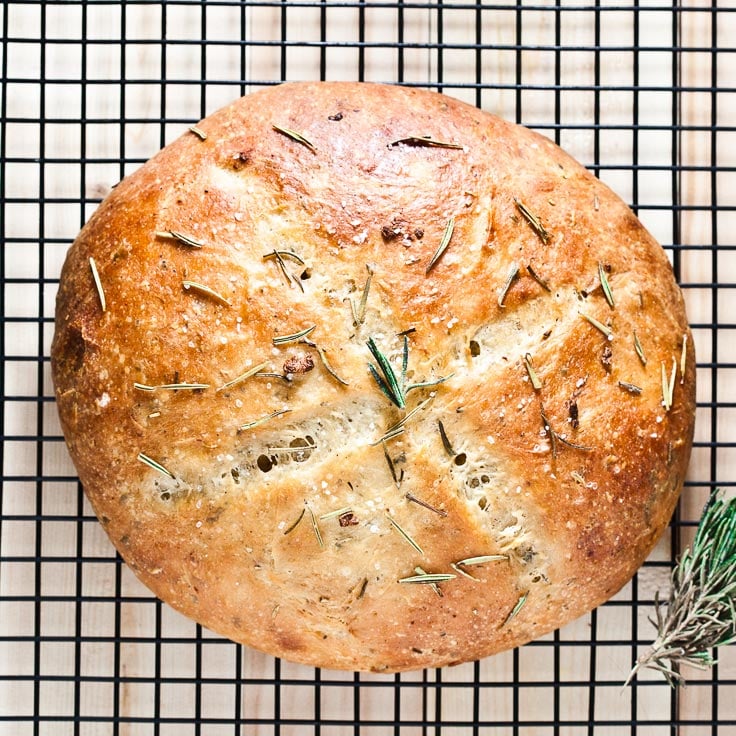
 389 views
389 viewsRosemary Garlic Bread
chewoutloud.com
4.8
(270)
25 minutes
Your folders

 237 views
237 viewsSourdough Garlic Bread
littlebroken.com
20 minutes
Your folders

 473 views
473 viewsSourdough Parmesan Bread with Rosem...
pantrymama.com
45 minutes
Your folders
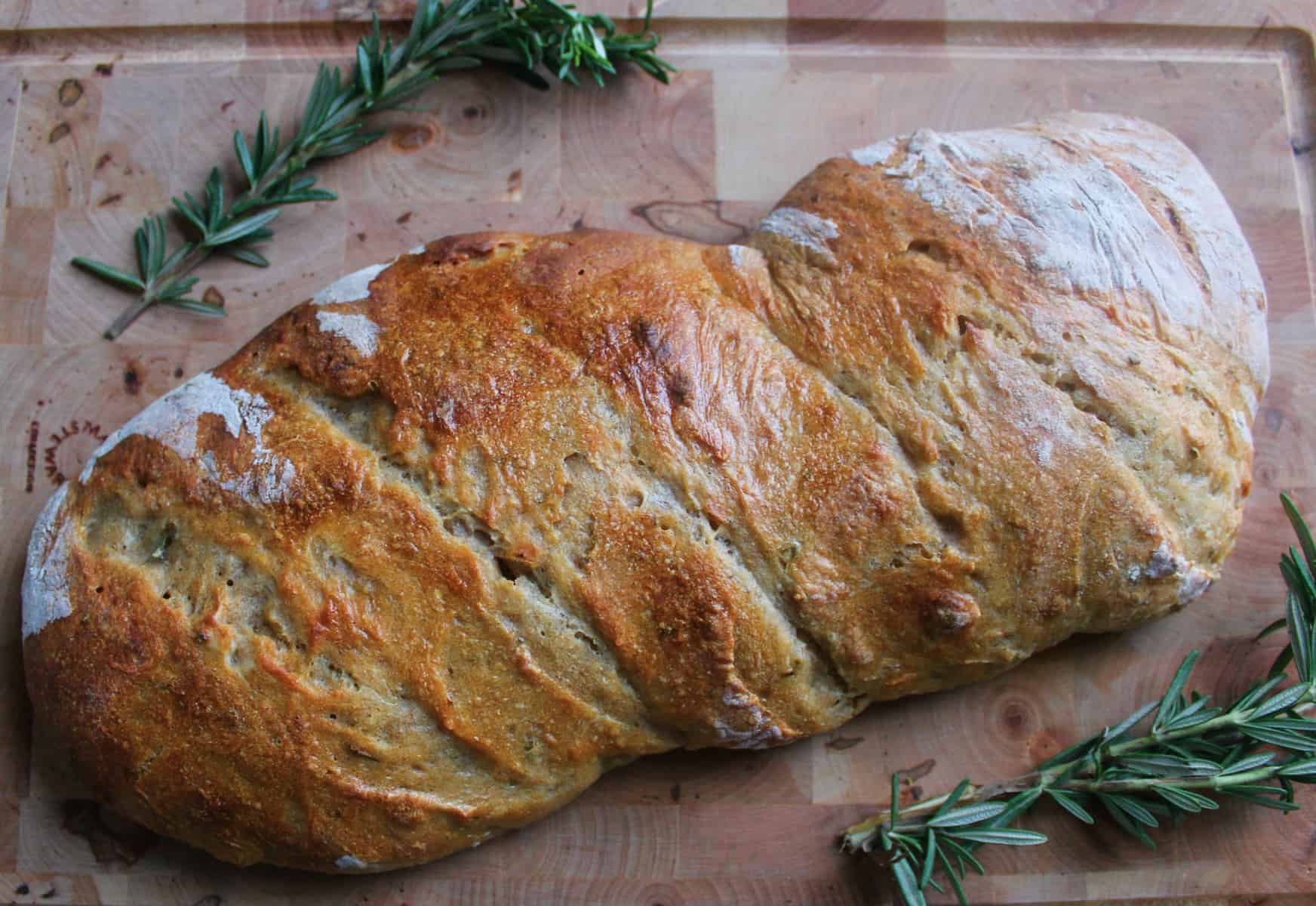
 47 views
47 viewsGolden Italian rosemary sourdough b...
immigrantstable.com
4.9
(73)
30 minutes
Your folders

 261 views
261 viewsRosemary-Garlic Beer Bread
myrecipes.com
Your folders
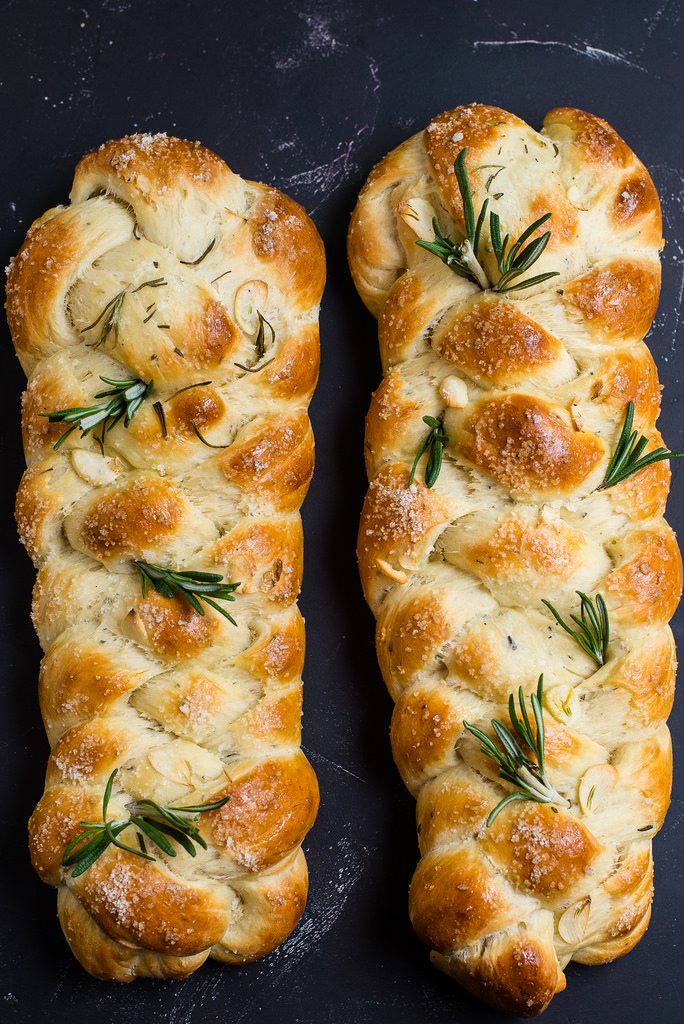
 531 views
531 viewsRosemary Garlic Challah Bread
honestcooking.com
5.0
(9)
Your folders
 194 views
194 viewsRosemary Thyme Garlic Bread
foodtalkdaily.com
20 minutes
Your folders
 303 views
303 viewsSourdough Focaccia with Rosemary an...
culturesforhealth.com
25 minutes
Your folders
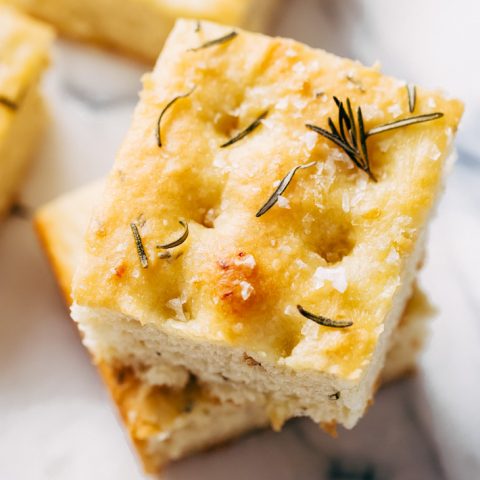
 409 views
409 viewsRoasted Garlic Rosemary Focaccia Br...
littlespicejar.com
4.9
(73)
20 minutes
Your folders
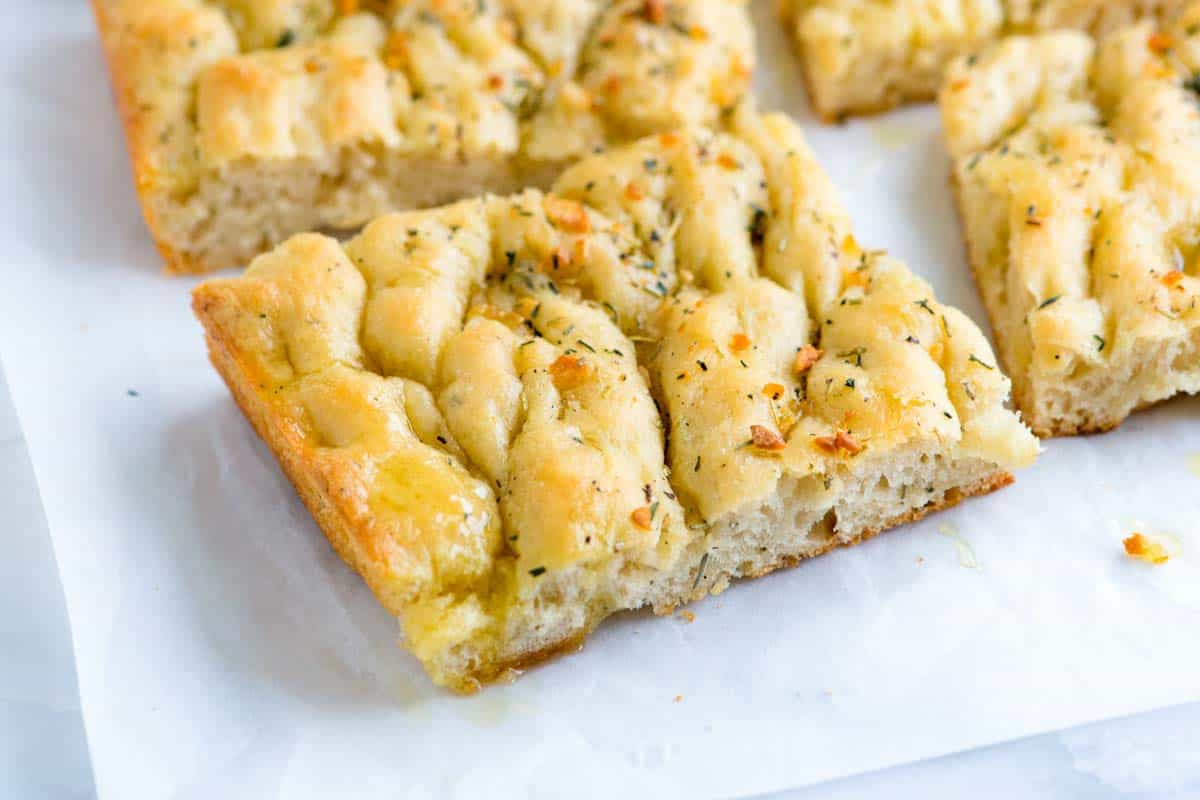
 1154 views
1154 viewsEasy Rosemary Garlic Focaccia Bread
inspiredtaste.net
4.8
(215)
20 minutes
Your folders

 1108 views
1108 viewsRosemary Garlic Pull Apart Bread
sallysbakingaddiction.com
5.0
(1)
50 minutes
Your folders

 314 views
314 viewsGarlic and Rosemary Skillet Bread
thefoodcharlatan.com
5.0
(2)
20 minutes
Your folders

 416 views
416 viewsEasy Rosemary Garlic Focaccia Bread
inspiredtaste.net
4.8
(270)
20 minutes
Your folders
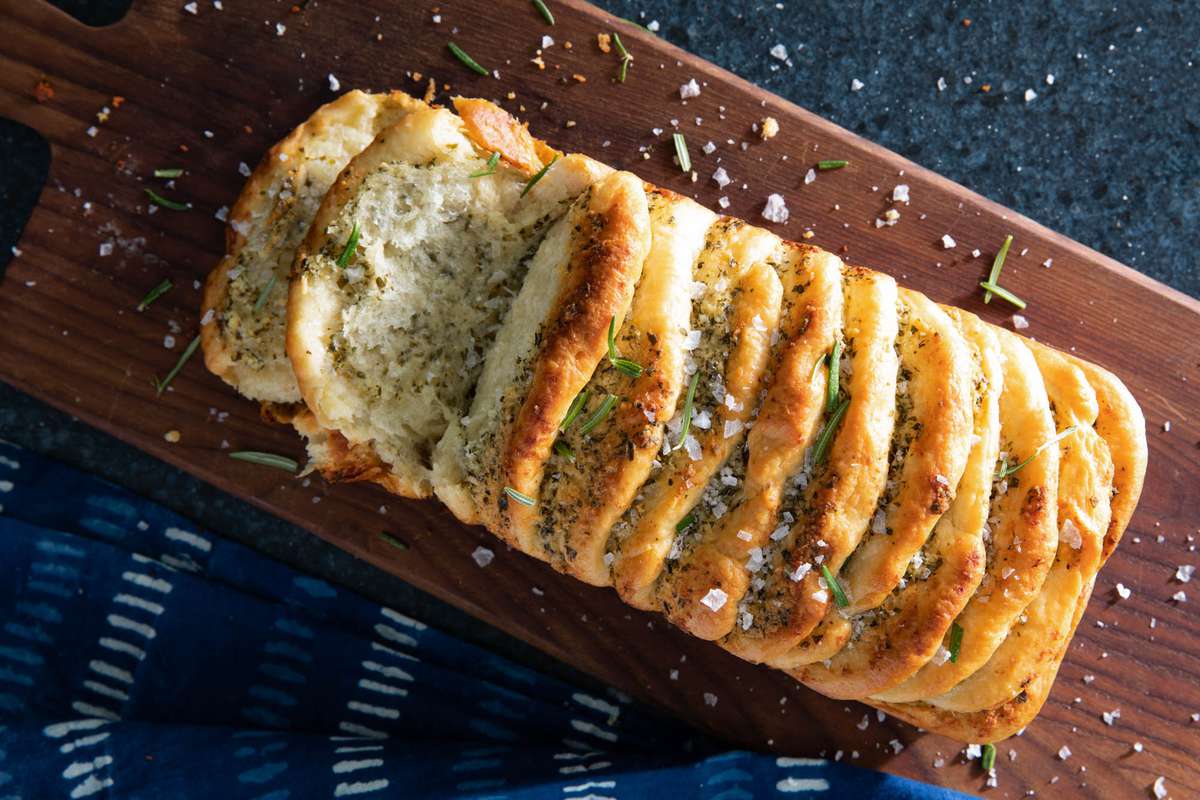
 232 views
232 viewsPull-Apart Rosemary-Garlic Bread
foodandwine.com